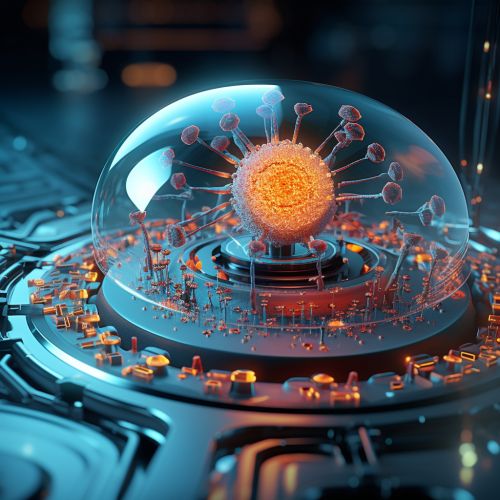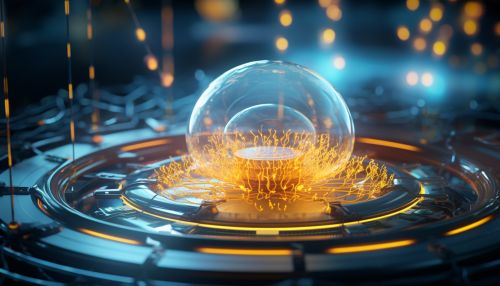Nanobiotechnology
Introduction
Nanobiotechnology, also known as bionanotechnology, is a multidisciplinary field that bridges the gap between nanotechnology and biology. This field of study involves the application of nanoscale principles and tools to understand and manipulate biological systems. The field is a fusion of disciplines that holds substantial promise for advances in medical diagnostics, therapeutics, and biomaterials.


History and Development
The concept of nanobiotechnology emerged in the late 20th century, as scientists began to recognize the potential of manipulating materials at the nanoscale to interact with biological systems. The field has grown exponentially since its inception, with advancements in both nanotechnology and biology driving its development.
Principles of Nanobiotechnology
Nanobiotechnology operates at the intersection of physics, chemistry, biology, and engineering. It involves the study and manipulation of biological and bio-inspired components at the nanoscale, typically ranging from 1 to 100 nanometers.
Nanoscale Interactions
At the nanoscale, the physical and chemical properties of materials can differ significantly from those at larger scales. These unique properties are harnessed in nanobiotechnology to create novel materials and devices that can interact with biological systems in unprecedented ways.
Bio-Nano Interface
The interaction between nanomaterials and biological systems, known as the bio-nano interface, is a key focus of nanobiotechnology. Understanding this interface allows for the design of nanomaterials that can interact with cells, proteins, and DNA in specific ways, enabling targeted drug delivery, improved imaging techniques, and new therapeutic approaches.
Applications of Nanobiotechnology
Nanobiotechnology has a wide range of applications in various fields, including medicine, environmental science, and industrial biotechnology.
Medicine
In the field of medicine, nanobiotechnology has been used to develop new drug delivery systems, diagnostic tools, and therapies. For example, nanoparticles can be designed to target specific cells or tissues in the body, improving the efficacy of drugs and reducing side effects.
Environmental Science
In environmental science, nanobiotechnology can be used to develop more efficient and sustainable technologies. For example, nanoscale materials can be used in water purification, energy production, and pollution control.
Industrial Biotechnology
In industrial biotechnology, nanobiotechnology can be used to develop new materials and processes. For example, bio-inspired nanomaterials can be used in the fabrication of electronics, sensors, and other devices.
Future Perspectives
The field of nanobiotechnology continues to evolve, with new discoveries and technologies constantly expanding its potential applications. Future research in this field is expected to lead to breakthroughs in areas such as personalized medicine, environmental sustainability, and bio-inspired materials and devices.
See Also
Nanomedicine Bioengineering Nanomaterials
